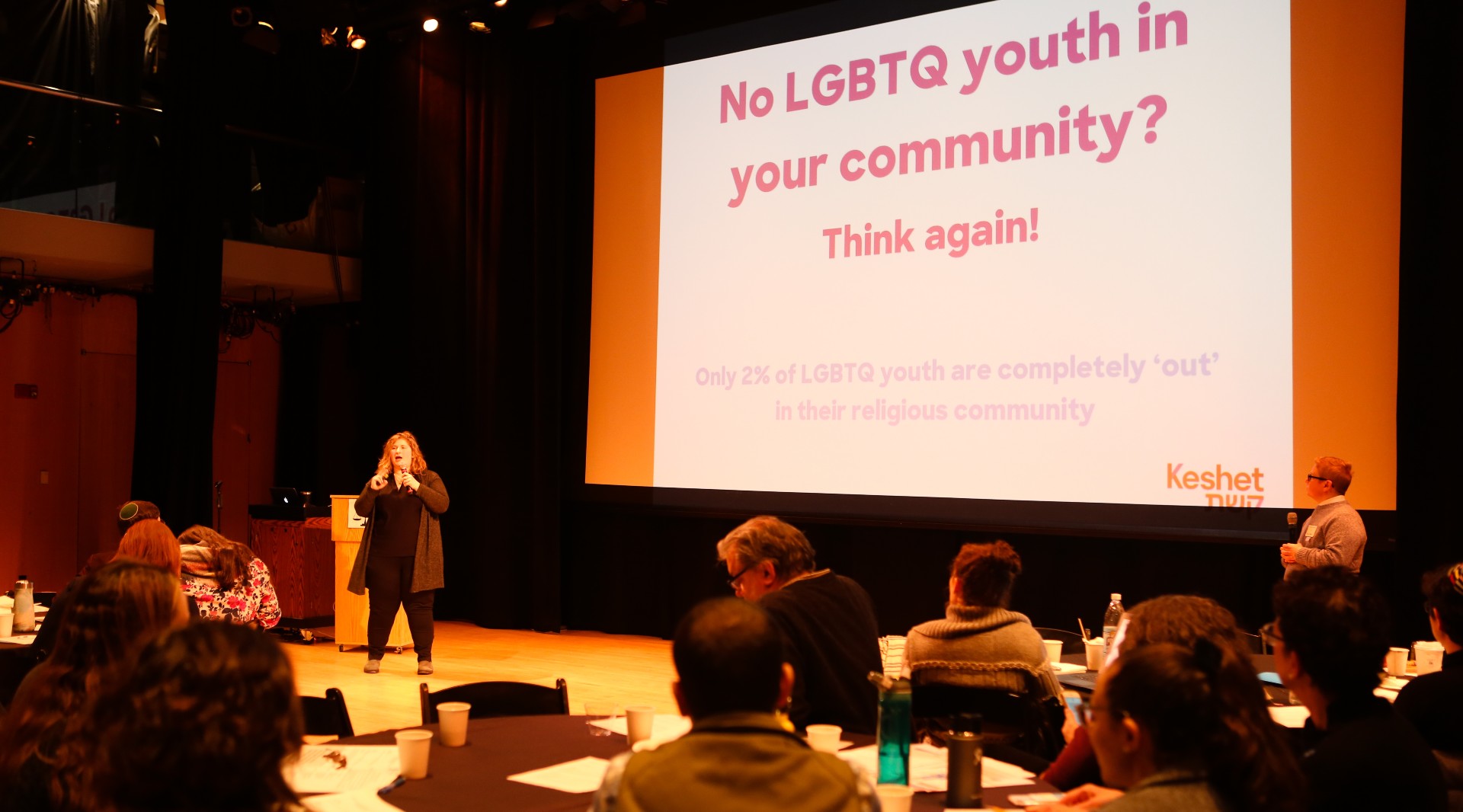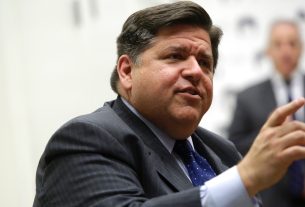
Over the last year, no fewer than five young people came out publicly as LGBTQ at the Society for the Advancement of Judaism, a pluralistic synagogue on Manhattan’s Upper West Side.
Even Rabbi Lauren Grabelle Herrmann, SAJ’s spiritual leader and an active champion of gay rights dating back to her days as a rabbinic intern at Congregation Beit Simchat Torah, the world’s largest synagogue for LGBTQ individuals, was surprised at the number.
“That’s a lot in a very small community,” Herrmann said. “And the whole community has been very accepting.”
In the congregation of 270 families, only a handful of adults identify as gay, lesbian, bisexual, transgender or queer, she said.
“But there are quite a substantial number of tweens and teens, and even younger, who are LGBTQ,” Herrmann said. “These are kids who are out by the fourth grade through high school, from age 8 and up.”
To help figure out how to support them, the synagogue for the past six years has been working with Keshet, the national Jewish organization that works for full equality of LGBTQ individuals in Jewish life.
Among the changes the synagogue has implemented: Instead of using the gendered terms bar or bat mitzvah, the synagogue now uses the gender-neutral term b’mitzvah. Instead of calling a person to the Torah by saying “ya’amod” for a man or “ta’amod” for a woman, everyone is called by “na la’amod” – “please stand.”
This year, as a result of multi-year support from UJA-Federation of New York, SAJ and Keshet have developed a more formal partnership to ensure greater inclusivity and sensitivity.
“A lot of kids now have more openness to express themselves in new ways, and the environment of SAJ makes it a safe place for them,” Herrmann said. “It’s been wonderful.”
It’s a step that a growing number of synagogues and other Jewish institutions are taking amid the skyrocketing number of people coming out as LGBTQ while still in their teens or even younger. The 2020 survey of U.S. Jewry by the Pew Research Center found that about one in 10 Jewish Americans identifies as lesbian, gay or bisexual. But among the respondents, 15% in their 30s and 40s, and 25% younger than 30, identified as something other than straight.
“I would assume if we were looking at under 18, that percentage would increase,” said Idit Klein, president and CEO of Keshet. “These are numbers that we have to pay attention to and that we need to guide us how to make investments in a change that is needed both in Jewish life and in the broader world.”
Klein said the Pew survey missed the number of Jews who are trans or nonbinary.
“It’s a painful erasure,” Klein said. “The No. 1 reason we see that trans and nonbinary Jews leave the Jewish community is because of explicit transphobia or the absence of proactive gestures that tell them this is a community that sees them and wants them.”
SAJ is one of six synagogues and two summer camps now receiving yearlong training and consultation under the UJA-Keshet Leadership Project designed to strengthen their work for LGTBQ equality and belonging. Each of the institutions has designated a small team of professionals and/or lay leaders to be a part of this project, which started in March.
The Leadership Project followed one open to all Jewish institutions in the five boroughs of New York City, Long Island and Westchester begun in December 2019 and extended until the end of this month because of COVID restrictions. Some 14 institutions participated, including the Marlene Meyerson JCC Manhattan, synagogues and day schools.
Over a three-year period, UJA-Federation of New York has invested more than $350,000 in grants to Keshet.
Dubbs Weinblatt, Keshet’s associate director of education and training for New York, said the growing number of young people identifying publicly as LGBTQ is a reflection of a growing sense of safety people feel to come out and say who they are.
“Communities are making active changes to celebrate and embrace folks. This then creates a sense of belonging for all,” said Weinblatt, whose pronouns are they/them. “Jewish institutions want to work with Keshet to make sure that their programming, policy and cultures celebrate and represent all LGBTQ Jews.”
Weinblatt has been conducting trainings around LGBTQ issues for synagogue clergy, including how to build more inclusive congregations. For day school educators, they said, there have been discussions about how to talk about gender in the classroom.
“LGBTQ Jews are an important part of our Jewish community and we want to ensure that they feel fully included in all of our Jewish institutions,” said Andrea Fleishaker, a planning director in UJA-Federation’s Jewish life department.
The Riverdale YM-YWHA was among the Jewish institutions that did training with Keshet. Initially the senior center staff, family and youth department, a board member and the Y’s chief operating officer participated in a daylong training, and several months later Weinblatt came in to do a training for all staff.
“We are trying to make sure we are doing what is needed so that everyone can feel welcome. That is our goal,” said Matt Abrams Gerber, the COO. “We have plenty to learn and we are trying to be a place in the community where everyone feels completely welcome, including members of the LGBTQ community.”
At B’nai Jeshurun, a Conservative synagogue in Manhattan, executive director Colin Weil, who is gay, was approached by both UJA-Federation and Keshet to participate in the Leadership Project. He realized through the program that being welcoming doesn’t mean not asking people about their gender identity or sexual orientation; there are ways of asking that are affirming.
Today the synagogue’s membership forms ask about gender identity, and in parentheses, cis or trans (cis refers to those whose gender identity aligns with what they were assigned at birth).
“We’re trying to see everybody for who they are and allow them to add to who they are, but we do not want to separate them at the get-go,” Weil said. “We are all born in God’s image and God did not have to identify as a gender.”
“As an out gay leader in a mainstream Jewish community,” he added, “it is affirming that the Jewish community is acknowledging the importance of doing this work.”




